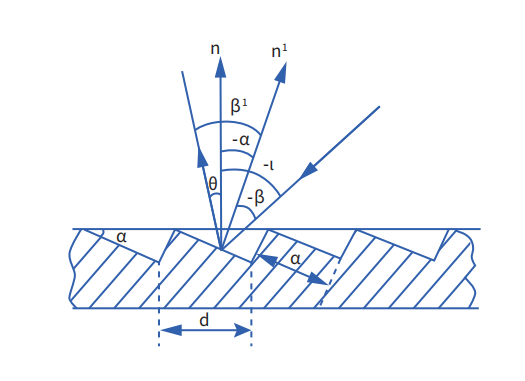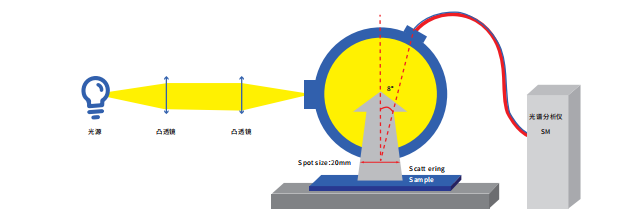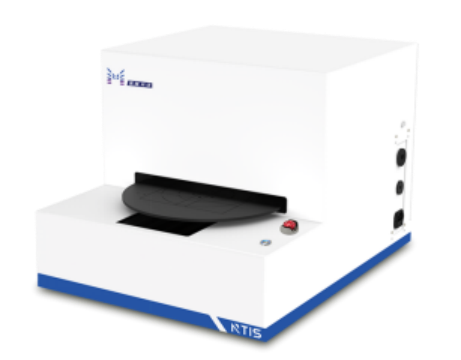
Quantum Efficiency Tester
PL/EL Integrated System
PV-Reflectumeter
3D Confocal Microscope
In-Line Four Point Probe Tester
Four Point Probe Tester
In-Line Thin Film Thickness Tester
Raman Spectrometer
FTIR Spectrometer
Spectrophotometer
Automatic Spectroscopic Ellipsometer
Contact Resistance Tester
Ultra depth of field 3D microscope
Auto Visual Tester
VMM PV Vision Measuring Machine
Solar Cell Horizontal Tensile Tester
Steady State Solar Simulator for Solar Cell
Solar Cell UV Aging Test Chamber
Solar Cell Comprehensive Tensile Tester
Visual Inspection Tester
Wet Leakage Current Tester
PV Module EL Tester
PV Module UV Preconditioning Chamber
Steady State Solar Simulator for PV Module
Current Continuous Monitor
Potential Induced Degradation Test
Bypass Diode Tester
LeTID Test System
Reverse Current Overload Tester
Impulse Voltage Tester
Hipot Insulation Tester
Ground Continuity Tester
Hipot Insulation Ground Tester
Damp Heat Test Chamber
Humidity Freeze Test
Thermal Cycle Test Chamber
Dynamic Mechanical Load Tester
Static Mechanical Load Tester
Hail Impact Tester
Robustness of Termination Tester
Module Breakage Tester
Cut Susceptibility Tester
Peel Shear Strength Tester
Universal Testing Machine (Single-arm)
Universal Testing Machine (Double-arm)
Glass Transmittance Tester
Acetic Acid Test Chamber
EVA Degree of Crosslinking Test System
Junction Box Comprehensive Tester
Drop ball tester
Semi-automatic scanning four-probe tester
Stylus Profilometer
Maximum Power Point Tracker
Perovskite Glass Transmittance Tester
Perovskite P1 Laser Scribing Multifunctional Testing Machine
Perovskite Online PL Tester
Perovskite Online Sheet Resistance Tester
Online Perovskite Film Thickness Tester
Perovskite Process Inspection Workstation
Portable IV Curve Tester
Portable EL Tester
Portable Thermal Imaging Tester
Solar Module Multi-Channel Testing System
PV Inverter Power Quality Tester
Drone EL Tester
IV Tester
IVEL Cell Sorting Machine
Influence of Optical Properties on the Light Reflection Intensity of Textured Wafer and Testing
Date : 2024-05-24Views : 175
Testing the light reflection intensity of textured wafer for different wavelength bands involves many aspects, including the optical properties of the material, measurement methods and technologies. The reflection intensity of textured wafer is affected by the characteristics of the material itself, such as transmittance, reflectance and absorption ratio. These parameters are not only important indicators for evaluating the performance of optical materials, but also a key basis for developing new optoelectronic materials. RTIS PV-Reflectometer from Millennial Solar can test the light reflectivity intensity of textured wafers in different wavelength bands, and perform automatic multi-point measurements. The test results are finally presented in a visual curve to help customers monitor cell reflectivity and film thickness information.
How do the optical properties of textured wafer materials affect its light reflection intensity at different wavelengths?
The optical properties of textured wafer materials, such as transmittance, reflectance and absorption ratio, have a significant impact on its light reflection intensity at different wavelengths. These properties determine how the material handles incoming light, whether it allows it to pass through (transmission), blocks its passage (absorption), or redirects the reflection (reflection).
Transmittance: Transmittance refers to the ability of a material to allow light to pass through. At short wavelengths, such as the ultraviolet region, many materials will show higher transmittance because this part of the spectrum is usually related to the electronic structure of the material, and the electronic structure is relatively stable in the ultraviolet region. However, at longer wavelengths, such as the infrared region, the transmittance may decrease because the vibrational modes in the material begin to match the energy of the photons, resulting in increased absorption.

Spectrum schematic diagram
Reflectance: Reflectance depends on the refractive index and thickness of the material. According to Fresnel's law, the reflectance is related to the incident angle. When the angle reaches the critical angle, the reflectance decreases to 0. In addition, the refractive index of the material will also affect the reflectance. The higher the refractive index, the smaller the reflectance.
Absorption ratio: Absorption ratio describes the ability of a material to absorb light energy. At certain wavelengths, a material may show specific absorption peaks due to specific transitions in the electron energy levels within the material. For example, some materials may have higher absorption ratios in the ultraviolet region because photons in this region are energetic enough to excite electrons from the valence band to the conduction band.
Considering the influence of many factors, the light reflection intensity of textured wafer materials at different wavelengths is affected by the optical properties. Millennial Solar PV-Reflectometer can not only test the reflectivity intensity of textured wafer for light in different wavelength bands, but also cover the wavelength range of 350-1050nm, accurately measuring reflectivity, film thickness and other important parameters.
Light reflection intensity and measurement methods of textured wafer in different wavelength bands
Testing the light reflection intensity and measurement methods of textured wafer in different wavelength bands involves a variety of technologies and equipment. The use of an integrated sphere detector and a collimated focused monochromatic beam is an efficient method to measure the total/hemispheric reflectance of a diffusely reflective substrate and the simultaneously reflected radiation factor. An integrating sphere is a device used to measure the reflection, transmission and absorption properties of materials. It works by uniformly distributing a light source in a closed spherical cavity and receiving the reflected or transmitted light intensity. In this configuration, an integrating sphere can be used to measure diffuse reflectance, while a collimated, focused monochromatic beam provides the light source. Effectiveness of diffuse reflectance measurements using integrated spheres in an experimental study of directional-hemispheric spectral transmittance and reflectance measurements. The study established a model that takes into account substitution errors in the measurement process and corrects them through theoretical calculations, thereby improving the accuracy of the measurements, demonstrating that the integrated sphere device is not only capable of diffuse reflectance measurements, but also that with appropriate calibration and calculation methods to improve the accuracy of measurement results.

Schematic diagram of reflectivity test structure
When light enters the integrating sphere, part of the light is absorbed by the sample, while the remaining light is reflected by the sample surface. These reflected light rays will be reflected and scattered multiple times inside the sphere, and eventually part of the light will pass through the sphere wall and be captured by the detector. The ratio of the light intensity recorded by the detector to the original incident light intensity is the diffuse reflectance of the sample.
Millennial RTIS PV-Reflectometer
RTIS PV-Reflectometer is an important helper for process inspection of solar cell manufacturers. You can test the reflectivity intensity of textured wafer to light of different wavelengths, excite the cell sheet through diffuse reflection, and detect it with a spectrometer at an 8-degree angle. RTIS has a positioning machine platform and guide rails, which can load samples conveniently and quickly, achieve sample positioning, and improve the work efficiency of users.

E-mail: market@millennialsolar.com
350-1050nm spectrum test range
Fast, automatic arbitrary multi-point measurement
The test speed of each point is about 0.1s, and the detection time is only 1/10 of the traditional reflectivity.
Accurately measure many important parameters such as reflectivity and film thickness
The light reflection intensity of textured wafer materials at different wavelengths is comprehensively affected by its optical properties. Factors such as transmittance, reflectance, and absorption interact to determine how light behaves in a material. The Millennial RTIS PV-Reflectometer provides a reliable measurement method by accurately testing reflectance intensity at different wavelengths. Its broad test range and precise parameter measurements make it an important tool for studying optical properties and their effects. In the future, as our understanding of optical materials continues to deepen, testing equipment like this will continue to play a key role in materials science and engineering.

































































